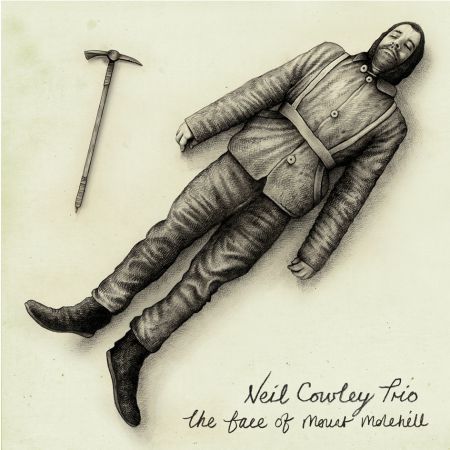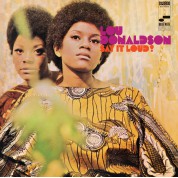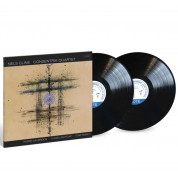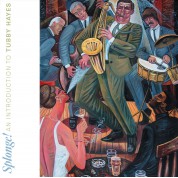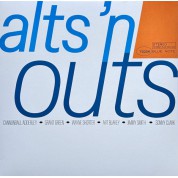The Face Of Mount Molehill - Plak
Tükendi
Bu Ürün Stoklarımıza Girince Haberdar Olmak İster Misiniz?
(+) Stoklara Girince Haber Ver
(+) Stoklara Girince Haber Ver
Ürün Hakkında
Barkod: 0797537118222
, Katalog No: Naim Audio LP182 , Firma: Naim Label
, Yayınlanma Tarihi:
17 Aralık 2012
Format Türü: Plak, Format: 1 LP, Gramaj: 180 gr., RPM: 33 rpm.
ENGLISH
A dazzling composer and advocate of pure audacious melody, on "The Face Of Mount Molehill", Cowley creates thrilling music defined by powerful rip-roaring riffs punctuated by passages of sheer delicacy. Recorded for the first time with a string ensemble, this album of deeply engaging instrumental music conveys passion and emotion that defy the need for words, looks set to launch the music of Neil Cowley Trio yet further into the listening public's consciousness.<br /><br /> Neil Cowley Trio look, superficially, like a jazz trio, in that they comprise three men making noises on a grand piano (Cowley), a drum kit (Evan Jenkins) and a double bass (newbie recruit Rex Horan). But these noises rarely sound like jazz. Their fourth album, "The Face Of Mount Molehill", features power pop songs without words, soundtracks in search of a film, exploratory minimalist miniatures, and the coolest TV theme tunes you'll ever hear.<br /><br /> »The title - “The Face Of Mount Molehill“ - is a reference to the way in which I take mundane, everyday things and explode them into something epic and romantic,« explains Cowley. »I am, basically, making musical mountains out of molehills. Little things become gargantuan.« To assist this process the trio are joined, for the first time, by an eight-piece string section. It's an idea they first explored in a one-off gig at the ICA for the 2010 London Jazz Festival, which featured a string quartet led by violinist Julian Ferraretto. »I've always wanted to work with strings,« says Cowley, who co-wrote the arrangements with Ferraretto. »It's my chance to be big and dramatic, like those amazing John Barry soundtracks that I grew up listening to.«<br /><br /> Alongside producer Dom Monks (engineer on Kings of Leon and Laura Marling, nominated for a Grammy for his work on the Ray LaMontagne album), Cowley is also assisted by Brian Eno sidekick Leo Abrahams, who provides subtle atmospheric soundscapes on several tracks. »Leo's a noise architect rather than a classic guitarist,« says Cowley. »He turned up to the studio with some ridiculous contraptions, like a box of springs, and ended up banging his guitar with a biro. All the weird noises you hear that aren't made on a piano are made by him.«<br /><br /> You can hear Abrahams making a grinding noise that sounds like a hammer drill on the title track, "The Face Of Mount Molehill". With its jabbering piano and strident strings, this quirky Madness-meets-Motown anthem is one of several rock gems on this album. Another is "Fable", a pulsating piece of power pop in an odd time signature which is accompanied by an expensive-looking promo video (shot by the director Jane Gerber with director of photography Dave Miller). Then there's the wonderfully angular and atmospheric "Rooster Was A Witness" (which Cowley likens to the sound of a cockerel who's just witnessed a murder), a sinister stomp called "Hope Machine", and the dramatic "La Porte", which resembles a track from Radiohead's "Kid A". The band tends to construct narratives around songs as they perform them. The achingly beautiful "Distance By Clockwork" is about two toy robots - a rusty clown and a ballerina - who try to communicate with each other from opposite sides of a nursery (»Evan, our drummer, does the craggy clockwork part«, says Cowley).<br /><br /> Most intriguing of all is "Mini Ha Ha", based around a sample of Cowley's baby daughter laughing. »She was playing farty noises on a synthesizer in my studio while I filmed her with a video camera, and she suddenly let out this Sid James-meets-Barbara Windsor giggle. It had a wonderful musicality to it, so I extracted that sound, started harmonising it and wrote a song around it. Me and my wife find it hilarious. Other people find it horrific, like something from Chucky's Revenge!«<br /><br /> Cowley likes playing at volume. »It comes from trying to be heard while I was playing with noisy R&B bands,« he says. »I was always trying to compete with the guitarists.« One grumpy critic's damning verdict of the group (»Loud, louder, Stop«) was even appropriated as the title of trio's second album. But it's important not to ignore the delicacy and sensitivity that imbues much of this album. It's bookended by two gorgeous, low-volume piano solos - "Lament" and "Siren's Last Look Back" - which both recall the limpid minimalism of Michael Nyman or Steve Reich. They're among a clutch of very different elegies written for recently deceased friends and relatives of the band. Lament is an uplifting, major-key theme, where Cowley's heavy sighing "Slims" is a slow-burning, woozy eulogy; "Meyer" is a beautiful, funereal dirge, filled with redemption.<br /><br /> The accompanying tour for this album opens at London's Queen Elizabeth Hall, where the trio are joined by an eight-piece string section. The last time Cowley played this venue was as a 10-year-old prodigy, playing Shostakovich's second piano concerto with a schools orchestra. Cowley is modest about his childhood achievements, but they are impressive. Aged five, he started playing an old upright Zender piano which had been left at his house by his (largely absent) father. At the age of seven he was playing hymns in assembly at his suburban west London infant school (»none of the teachers played the piano,« he shrugs, »so they asked me«). His talent was noticed by the borough's music chief, who ensured that the local authority paid for Cowley's piano lessons. Soon he was training at the Royal Academy Of Music every Saturday as a Junior Exhibitionist with a view to doing a music degree. But, coming from a single-parent family in the working-class suburb of Hayes, Middlesex, Cowley never felt comfortable in the classical conservatoire (»everyone was much posher than me; I was considered a bit of an oik«), and dropped out of education aged 15 to pursue a career as a musician.<br /><br /> He played pub gigs with R&B outfits. He toured Europe with a Blues Brothers tribute band. Aged 17 he answered a Melody Maker ad and ended up touring with big-selling pop group The Pasadenas. For three years in the early nineties he occupied the prestigious piano stool in the Brand New Heavies; in the early noughties he was playing warm electric piano grooves for Zero 7 (»I became the go-to guy for anyone who wanted that retro Fender Rhodes sound«). He formed an acclaimed chill-out duo called Fragile State in 2002; he played huge raves with a psychedelic trance band called The Green Nuns Of The Revolution; he co-wrote a hit single (with Michael Jackson sidekick Siedah Garrett) for funky house duo The Freemasons. It was only after making computer-based music for so long that he formed Neil Cowley Trio in 2005 to return to his first love, the acoustic piano. Recently, he has also played on transatlantic chart-topping albums by Grammy-nominated Adele (his piano carries tracks like Hometown Glory and Rolling In The Deep) and his music has featured on numerous TV shows and adverts, including Guinness, Vodafone and Nokia.<br /><br /> To date Neil Cowley Trio have released three albums - "Displaced" (Hide Inside Records, 2006), "Loud... Louder... Stop" (Cake, 2008) and "Radio Silence" (Naim Jazz, 2010). This varied background makes him very different to most musicians on the London jazz scene. Cowley has not been schooled on any jazz courses, and has instead picked up his skills on the job. He also tends to wear his impressive chops rather lightly: there is little improvisation on this album, instead the emphasis is on simple, direct melodies.<br /><br /> »I can improvise,« he insists. »I can improvise pretty well. I just choose not to improvise much on record. A record is a way of capturing a composition, a mood or a sentiment, and I feel that too much improvisation - rather like too much technique - can get in the way of that. We improvise more when we're playing live, but even then it's different to how a lot of jazz groups will solo. With us, it's about feeling peaks of energy that the audience react to and surfing that as a trio.<br /><br /> »When we play gigs in North America - and we always go down well in America and Canada - you realise the limitations of playing jazz. Playing jazz to the Yanks is like selling coal to the Geordies, or selling ice to the Eskimos. No matter how good you get, you're going to be replicating a style of music that is not intrinsically in you. We're an English band. And what the Brits do better than anyone else is pop and rock music. It's about melody and groove and texture. That's what we're good at, doing that with a touch of subversion.<br /><br /> The British jazz musicians that I adore - like Dudley Moore, a hugely underrated piano player - are ones that sound quintessentially English. There's humour, pathos, joy, happiness and melancholy that comes out of his playing, and his character imbues every note he plays. That's what I want my music to sound like. This music sounds like me.«<br /><br /> Recording: 2012 at RAK Studios by Dominic Monks<br /><br /> Production: Dominic MonksKatkıda Bulunanlar
|
|
Bu Ürünler İlginizi Çekebilir


